5 Exploring Egyptian Culture: Ancient Foundations and Enduring Legacy
“Despite all their hopes for the afterlife, the ancient Egyptians could not escape the natural human fear of death and its many unknowns.”
— Toby Wilkinson, Egyptologist, University of Cambridge

Introduction: Egypt in African and Global Context
Ancient Egypt occupies a unique position in both African history and global cultural development. While geographically African and culturally connected to other African civilizations, Egypt is often studied separately from the rest of the continent—a scholarly tradition that sometimes obscures the deep connections between Egyptian achievements and broader African cultural innovations. This separation reflects both the distinctive features of Egyptian civilization and the complex legacy of how African cultures have been categorized and understood in academic study.
Egyptian civilization emerged from the unique environmental and cultural conditions of the Nile River Valley, where annual floods created agricultural abundance that supported one of the world’s earliest and most enduring complex societies. For over three millennia, Egyptian culture demonstrated remarkable continuity while adapting to changing political circumstances, foreign conquests, and evolving religious and artistic traditions.
Understanding Egyptian culture requires recognizing both its distinctive achievements and its connections to broader African and Mediterranean worlds. Egyptian innovations in writing, mathematics, astronomy, medicine, and architecture influenced civilizations across Africa, the Middle East, and the Mediterranean, while Egyptian religious and artistic traditions incorporated elements from Nubian, Libyan, and other African cultures.
Reflection Question
Historical Development and Periodization
Egyptian civilization developed from prehistoric settlements along the Nile River that learned to harness the annual flood cycle for agriculture. This mastery of flood irrigation created the agricultural surplus necessary to support specialization, monumental architecture, and complex social organization that characterized Egyptian society for over three thousand years.
Major Historical Periods

Early Dynastic Period (3150-2686 BCE): Following the legendary unification of Upper and Lower Egypt, the early dynasties established fundamental institutions, artistic traditions, and religious practices that would define Egyptian culture. The development of hieroglyphic writing, the establishment of the pharaonic monarchy, and the construction of early monumental architecture all occurred during this foundational period.
Old Kingdom (2686-2181 BCE): Often called the “Pyramid Age,” this period witnessed the construction of the most famous Egyptian monuments, including the Great Pyramids of Giza. The Old Kingdom represented the first flowering of Egyptian art, architecture, and administrative organization, establishing many cultural patterns that would persist throughout Egyptian history.
Middle Kingdom (2161-1690 BCE): Following a period of political fragmentation, the Middle Kingdom reunified Egypt and expanded cultural and trade relationships with other African societies, particularly Nubia. This period saw significant literary development, including some of Egypt’s greatest literary works, and demonstrated Egyptian cultural resilience and adaptability.
New Kingdom (1549-1077 BCE): Egypt’s imperial period, when Egyptian armies conquered territories in the Near East and maintained complex relationships with other African kingdoms. This era produced famous pharaohs like Hatshepsut, Akhenaten, Tutankhamun, and Ramesses II, and witnessed both the zenith of Egyptian power and significant cultural innovations.
Late Period (664-332 BCE): A time of foreign domination and cultural adaptation, including Persian rule and the remarkable 25th Dynasty, when Nubian kings conquered and ruled Egypt, bringing distinctly African cultural elements into Egyptian royal traditions.
Greco-Roman Period (332 BCE-641 CE): Beginning with Alexander the Great’s conquest, this period saw Egyptian culture interact with Hellenistic and Roman civilizations while maintaining distinctive Egyptian characteristics, particularly in religious and artistic traditions.
Cultural Connections
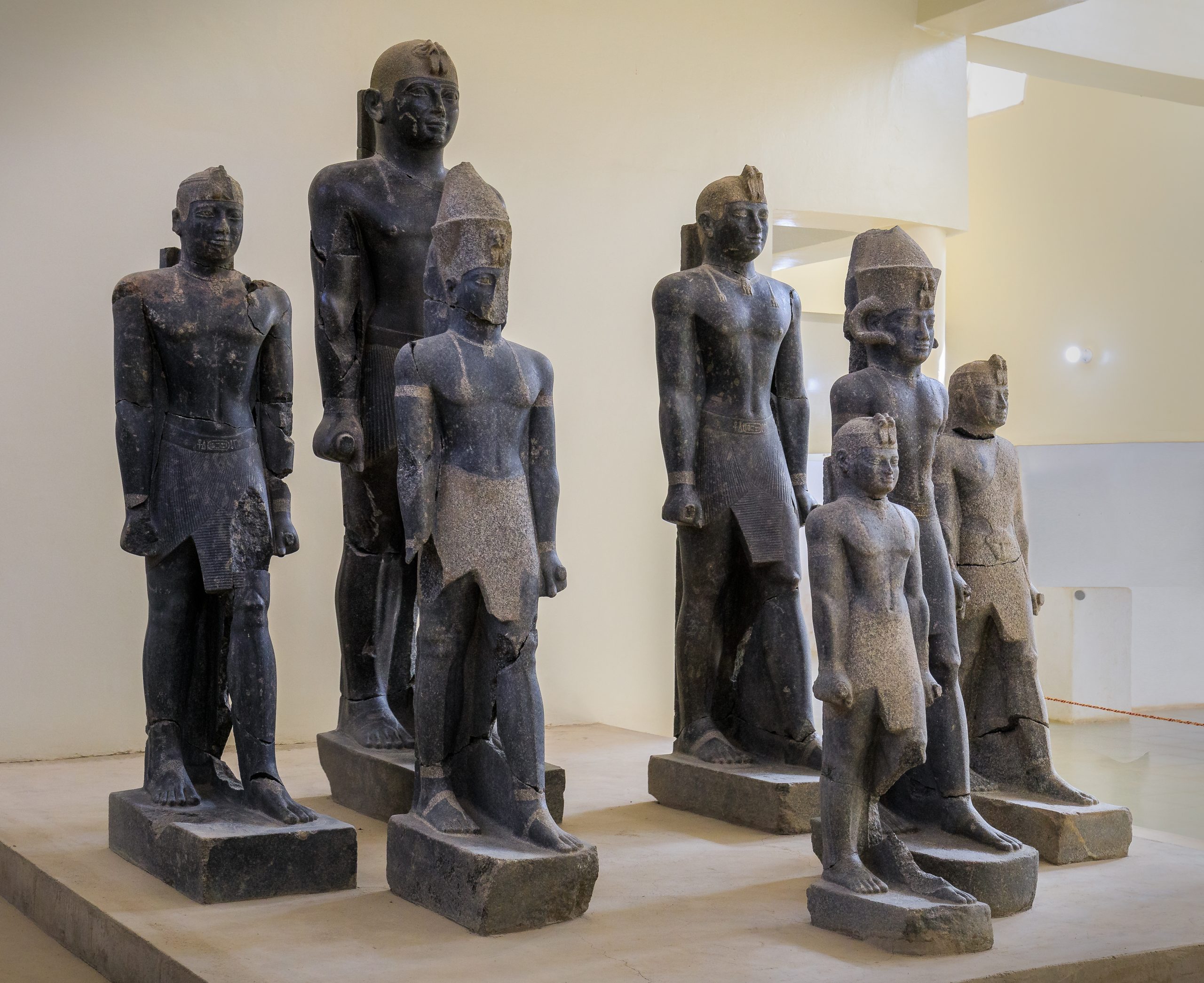
Religion and Cosmology
Egyptian religion was fundamentally concerned with understanding and maintaining cosmic order (ma’at) and ensuring successful transition to the afterlife. This religious system evolved over thousands of years, incorporating diverse influences while maintaining core concepts about divine authority, cosmic balance, and eternal life.
The Nature of Egyptian Deities
Egyptian religion began with local animal deities associated with specific towns and regions—cats, cobras, jackals, and other animals that represented particular powers or characteristics. Over time, these deities evolved into anthropomorphic forms with animal heads, creating the distinctive Egyptian iconographic style that combined human and animal attributes.
Major deities included Osiris (death and resurrection), Isis (magic and motherhood), Horus (kingship and protection), Seth (chaos and conflict), and Ra (solar power and creation). These gods were often organized into family groups or cosmic partnerships that reflected Egyptian understanding of balance and opposition in maintaining universal order.
Egyptian gods weren’t all-powerful in the Christian or Islamic sense but rather represented specific forces that required proper ritual attention and moral behavior to maintain cosmic harmony. This understanding shaped Egyptian ethics, politics, and daily life practices.
Death, Afterlife, and Mummification
Egyptian preoccupation with death and afterlife reflects both natural human concerns about mortality and specific cultural beliefs about the continuation of personality and identity after death. Egyptians believed that successful afterlife required preserving the physical body (through mummification), providing proper burial goods, and ensuring correct ritual procedures.
The mummification process evolved over centuries, reaching sophisticated levels of preservation that required detailed knowledge of anatomy, chemistry, and religious protocol. The removal and preservation of organs in canopic jars, the use of natron salts for desiccation, and the wrapping techniques all reflected both practical and religious considerations.
These practices were not limited to royalty—Egyptian society at all levels participated in death rituals appropriate to their economic circumstances, demonstrating the centrality of afterlife beliefs in Egyptian culture.
Cultural Connections
Explore these resources to learn more about ancient Egyptian religion and beliefs about the afterlife.
- Crash Course Mythology: Mediterranean Pantheons – Includes visual explanation of Egyptian religious systems
- Video: The Egyptian Book of the Dead: A guidebook for the underworld – Tejal Gala
- A team of scientists recently recreated the voice of an Egyptian mummified priest. You can hear the voice here: NY Times Article
Writing and Literary Achievement
Egyptian development of hieroglyphic writing represents one of humanity’s earliest and most sophisticated writing systems. These “holy symbols” served religious, administrative, and artistic functions throughout Egyptian history, preserving an extraordinary record of Egyptian thought, culture, and daily life.
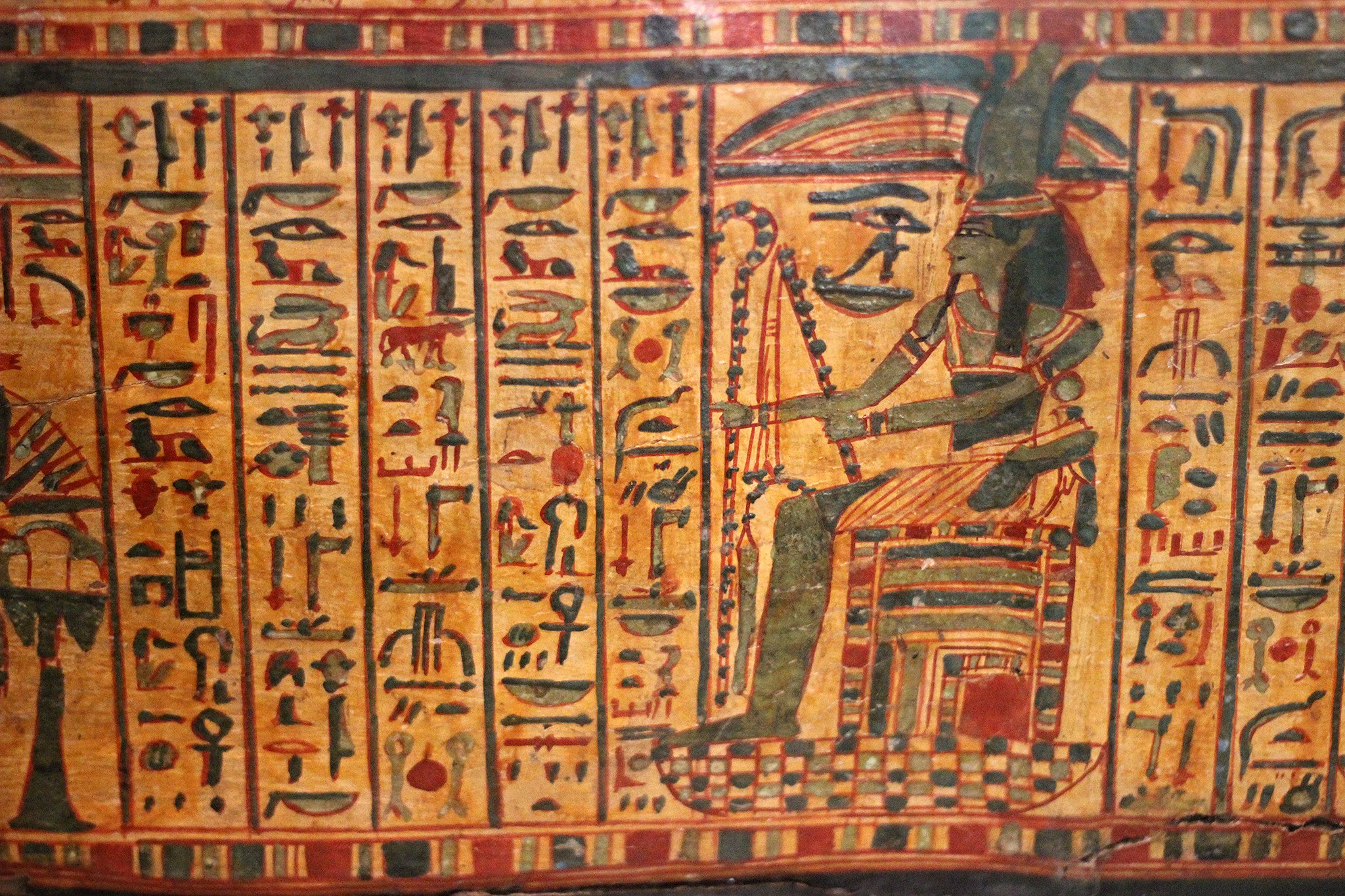
The Evolution of Egyptian Scripts
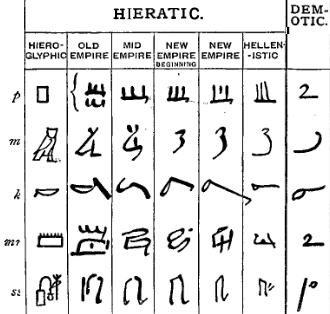
Hieroglyphic writing combined logographic and phonetic elements, allowing scribes to represent both concepts and sounds with remarkable precision. The system included over 700 individual signs that could function as word-signs, sound-signs, or determinatives that clarified meaning.
From the original hieroglyphic script, Egyptians developed two simplified forms: hieratic (for religious and administrative documents) and demotic (for everyday business and legal purposes). These scripts enabled efficient record-keeping and communication while maintaining the ceremonial importance of hieroglyphic writing for religious and monumental purposes.
The eventual replacement of Egyptian scripts with Coptic (Egyptian written in Greek letters) reflects the broader cultural changes that occurred during the Roman and early Christian periods, though some hieroglyphic knowledge persisted until the fourth century CE. The discovery of the Rosetta Stone in 1799 by French army officer Pierre-François Bouchard during France’s invasion of Egypt enabled scholars to decode hieroglyphics again. Here’s a brief video about the Rosetta Stone.
Literary Traditions and Intellectual Life
Egyptian literature encompassed religious texts, wisdom literature, stories, poetry, and scientific treatises. The “Instructions” genre provided ethical and practical guidance for successful living, while narrative literature explored themes of adventure, morality, and human relationships.
Religious literature included funerary texts like the “Book of the Dead,” which provided guidance for navigating the afterlife, and hymns that expressed sophisticated theological concepts. These texts reveal Egyptian philosophical thinking about ethics, cosmic order, and human responsibility.
As mentioned above, the decipherment of hieroglyphics in the 19th century, using the Rosetta Stone’s trilingual inscription, opened this vast literary heritage to modern scholarship and revealed the intellectual sophistication of Egyptian culture.

Reflection Question
Art and Architecture
Egyptian art and architecture achieved a distinctive style that remained remarkably consistent across thousands of years while serving religious, political, and cultural functions. Egyptian artistic traditions reflected both aesthetic preferences and religious beliefs about the relationships between earthly and divine realms.
Monumental Architecture
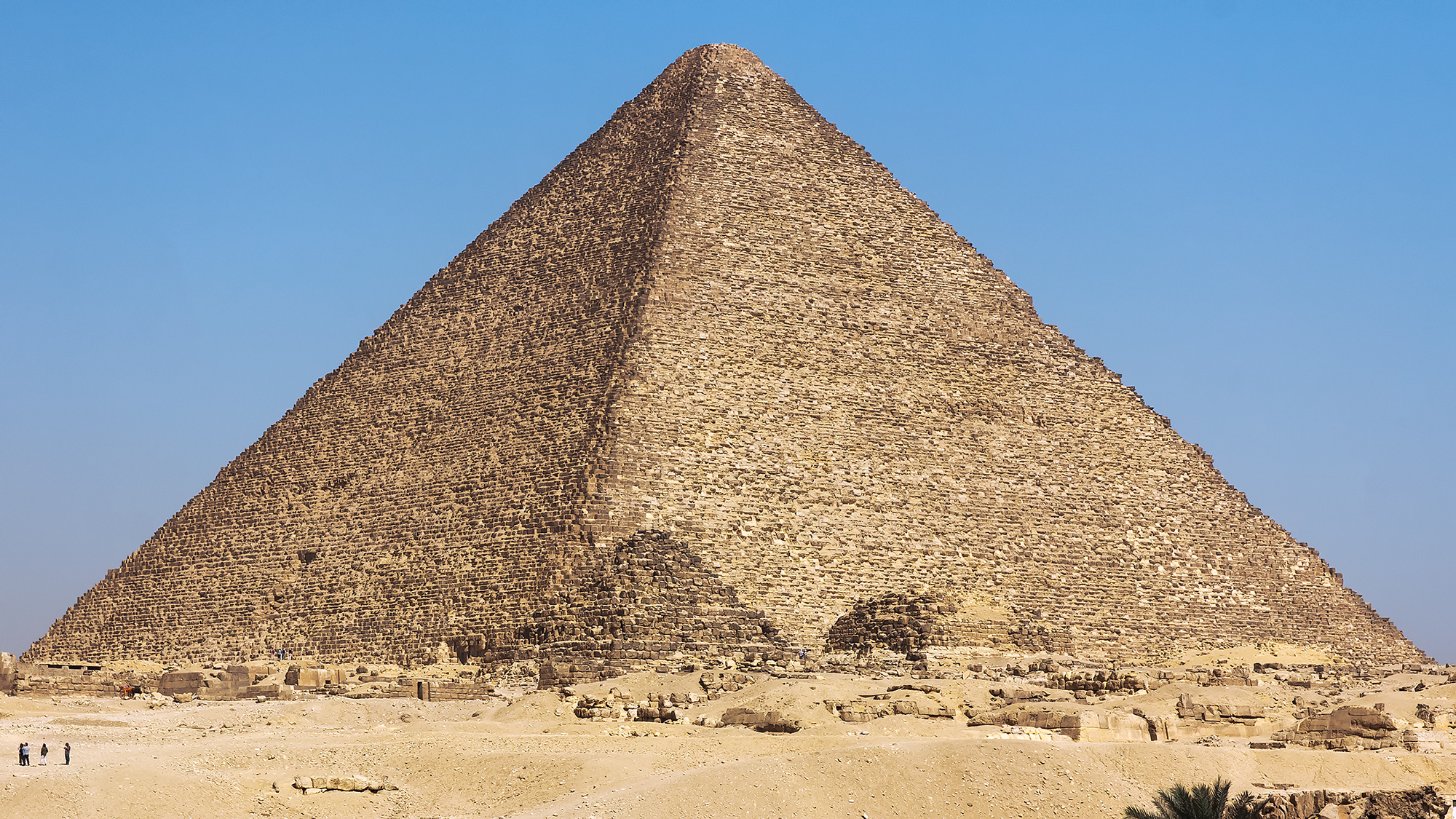
The Great Pyramids of Giza represent the pinnacle of Old Kingdom architectural achievement, demonstrating sophisticated understanding of mathematics, engineering, and astronomy. The Great Pyramid of Khufu, originally 481 feet tall and built from precisely cut limestone blocks, remains the only surviving wonder of the ancient world.
Egyptian pyramid construction required extraordinary organizational capabilities, involving thousands of workers, complex logistics, and precise planning. Recent archaeological evidence suggests that pyramid builders were skilled workers who received proper nutrition and medical care, challenging popular misconceptions about slave labor.
Later architectural achievements included the temple complexes at Karnak and Luxor, which demonstrate Egyptian mastery of monumental stone construction and sophisticated understanding of architectural space and proportion. These buildings served both religious and political functions, creating spaces for ritual while asserting royal and divine authority.
Artistic Conventions and Cultural Meaning
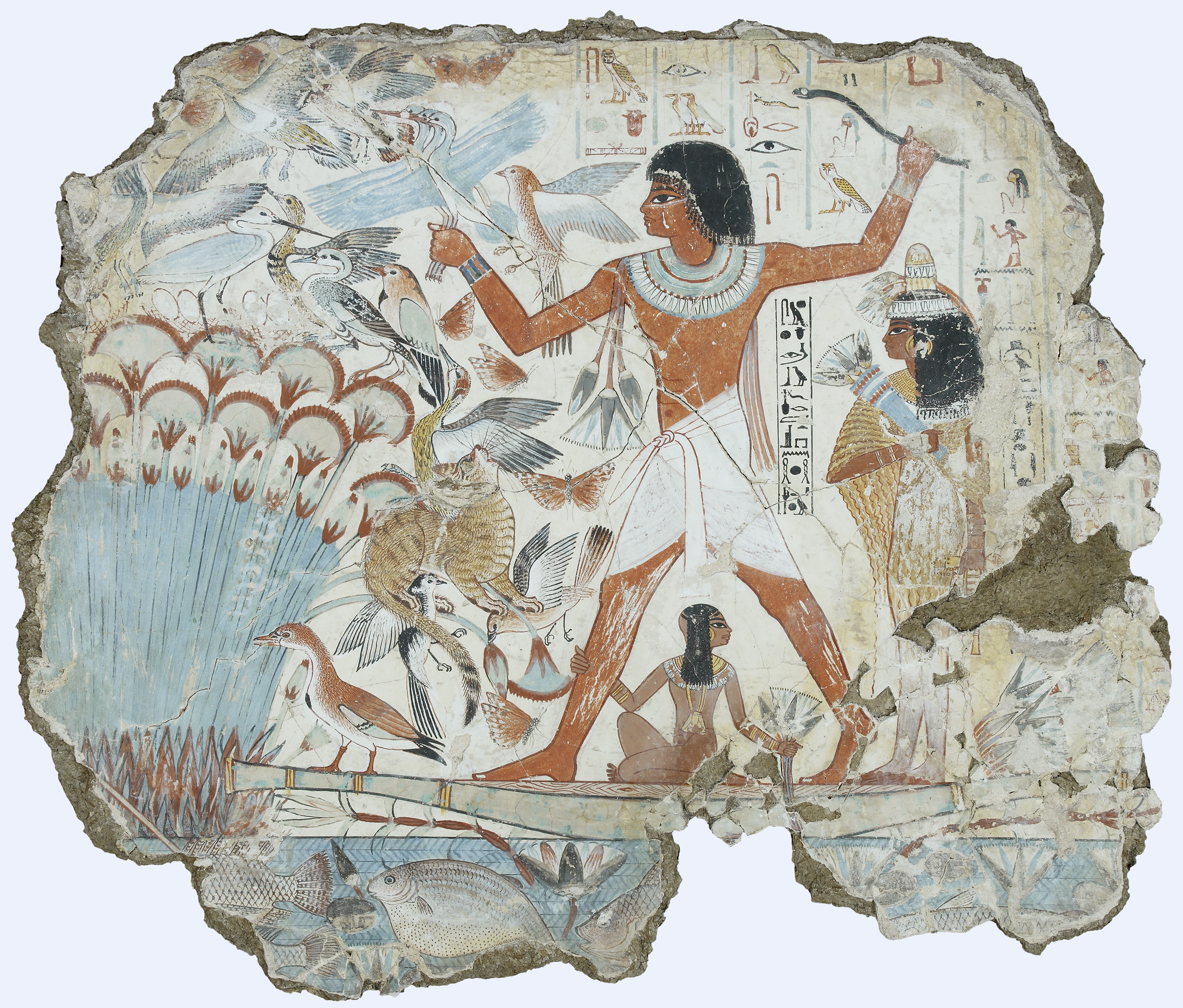
Egyptian art followed distinctive conventions that prioritized symbolic meaning over naturalistic representation. The familiar Egyptian artistic style—figures shown in profile with forward-facing torsos—reflected cultural beliefs about proper representation rather than inability to create realistic images.

Egyptian artists could create remarkably naturalistic work when desired, as demonstrated by the famous bust of Nefertiti and other portrait sculptures. The choice to follow conventional styles reflected religious and cultural values about permanence, order, and appropriate representation of divine and royal authority.
Egyptian artistic traditions influenced other African cultures, particularly in Nubia, where Egyptian styles were adapted to local preferences and religious needs. The artistic exchange between Egypt and other African societies demonstrates the cultural connections that scholarly traditions sometimes obscure.
Cultural Connections
Science, Mathematics, and Astronomy
Egyptian achievements in mathematics, astronomy, and medicine provided foundations for later scientific development in the Mediterranean world and beyond. These innovations emerged from practical needs such as agricultural timing, architectural construction, and medical treatment, but they developed into sophisticated theoretical understanding.
Mathematical Innovations
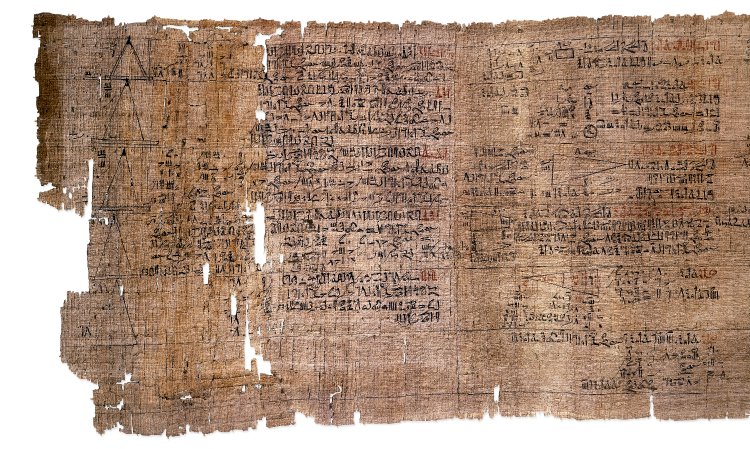
Egyptian mathematics used a decimal system based on powers of ten, enabling complex calculations necessary for architectural projects, tax collection, and astronomical observations. Although they lacked a symbol for zero, Egyptian mathematicians could perform sophisticated operations using addition, subtraction, and tables of multiplication and division.
Egyptian mathematical knowledge enabled the precise calculations required for pyramid construction, where tiny errors in angle or measurement could create significant structural problems. The accuracy of pyramid construction demonstrates practical mathematical skills that equaled theoretical understanding.
Mathematical papyri like the Rhind Papyrus preserve Egyptian problem-solving techniques and reveal approaches to geometry, fraction calculation, and algebraic thinking that influenced later mathematical development in Greece and the Islamic world.
Astronomical Observations and Calendar Systems
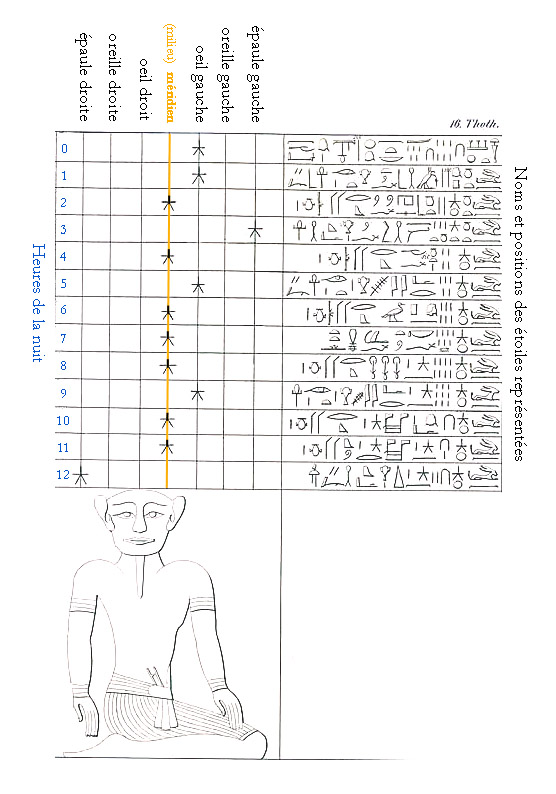
Egyptian astronomy developed from practical needs for agricultural timing and religious festival scheduling. Egyptian observations of stellar positions, lunar cycles, and solar movements enabled the creation of calendar systems that remained in use for thousands of years.
The Egyptian civil calendar included 365 days divided into twelve months of thirty days each, plus five additional days associated with divine birthdays. This calendar year gradually shifted relative to the seasons, creating a complex relationship between civil and religious time-keeping that required sophisticated astronomical knowledge to manage.
Egyptian astronomical knowledge influenced temple and pyramid construction, with buildings oriented to capture specific celestial events like solstices, equinoxes, and stellar alignments. The Great Pyramid’s passages align with specific stars, connecting architectural achievement with astronomical observation.
Cultural Connections
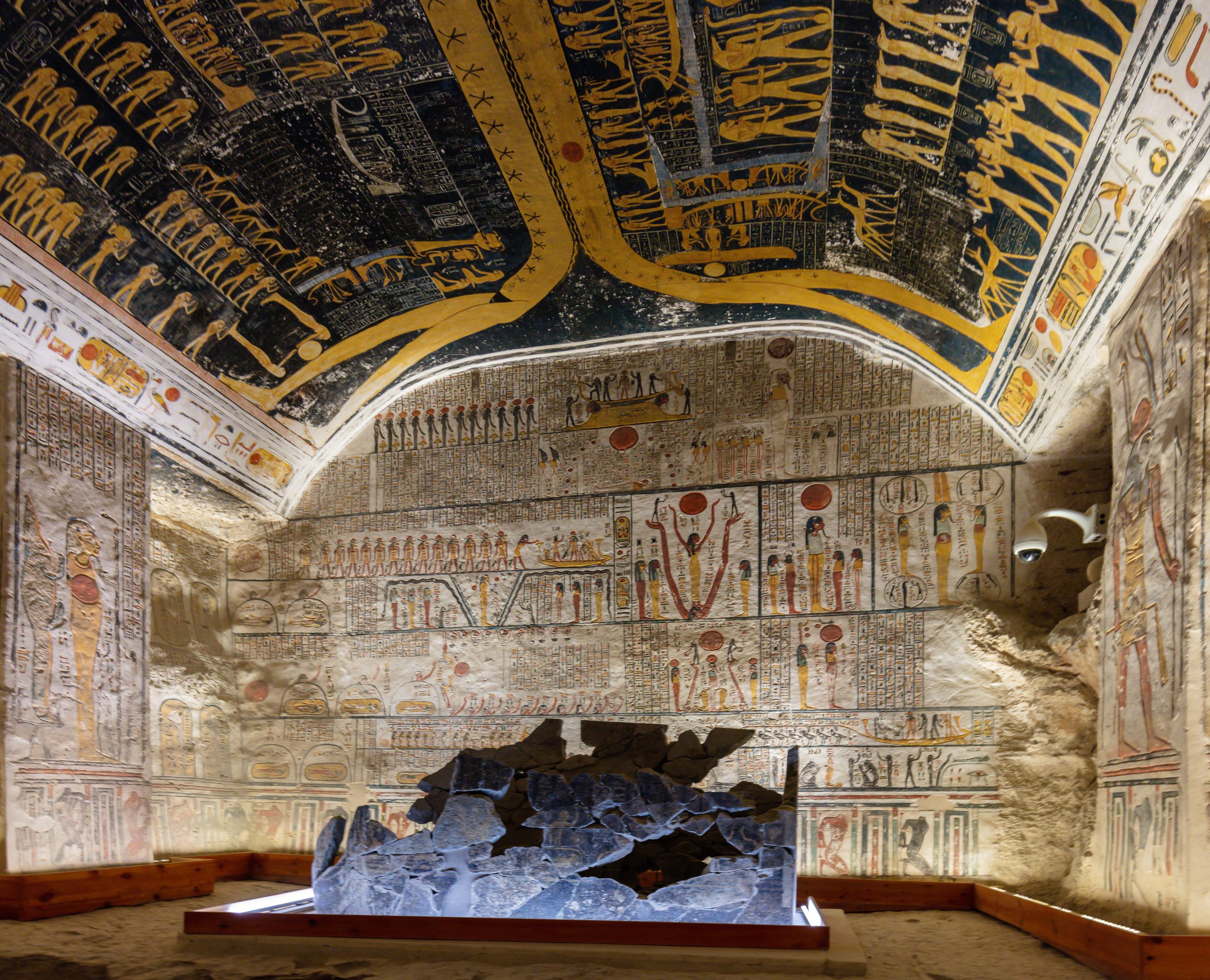
Medical Knowledge and Practice
Egyptian medicine combined empirical observation with religious understanding of disease and healing. Medical papyri preserve detailed descriptions of surgical procedures, diagnostic techniques, and pharmaceutical preparations that demonstrate sophisticated medical knowledge.
Egyptian physicians specialized in different medical fields and could perform complex procedures including brain surgery, bone setting, and dental work. The Edwin Smith Papyrus reveals systematic approaches to trauma treatment that parallel modern medical methodology.
Egyptian medical knowledge influenced later Greek and Islamic medical traditions, contributing to global medical development while reflecting distinctively Egyptian approaches to understanding the relationship between physical and spiritual health.
Social Organization and Daily Life
Egyptian society was hierarchically organized but offered considerable social mobility for a pre-modern civilization. Understanding Egyptian social structure requires recognizing both the importance of royal and religious authority and the opportunities available for advancement through education, military service, and professional achievement.
Social Hierarchy and Mobility
Egyptian society included royalty and nobility at the apex, followed by priests, scribes, and government officials who formed an educated bureaucratic class. Artisans, farmers, and workers comprised the majority of the population, while slaves (often prisoners of war) occupied the lowest social positions.
However, this hierarchy allowed significant mobility. Talented individuals could advance through education, particularly literacy, which opened opportunities in government administration, religious service, and professional specialization. Many high officials came from modest backgrounds, demonstrating that Egyptian society valued competence alongside birth status.
Women in Egyptian society enjoyed relatively high status compared to other ancient civilizations. Women could own property, conduct business, serve as priestesses, and occasionally rule as pharaohs. The examples of Hatshepsut, Nefertiti, and Cleopatra demonstrate female political power, while legal documents reveal women’s economic and social rights.
Economic Organization and Trade
The Egyptian economy was based on agriculture supported by the Nile’s annual floods, but included sophisticated craft production, trade networks, and monetary systems. Egyptian artisans produced goods that were traded throughout the Mediterranean and into Africa, creating cultural exchanges that influenced both Egyptian and foreign societies.
Trade relationships with Nubia provided gold, ivory, and exotic animals, while connections with the Levant brought cedar wood, metals, and other materials. These trade networks facilitated cultural exchange and technological transfer that enriched Egyptian civilization while spreading Egyptian influence.
Egyptian agricultural techniques, including irrigation systems, crop rotation, and flood management, influenced farming practices throughout the Nile Valley and provided models for agricultural development in other African societies.
Egypt’s African Connections
While often studied in isolation, ancient Egypt maintained extensive cultural, political, and economic relationships with other African societies. These connections shaped Egyptian development and demonstrate Egypt’s integral role in African historical processes.
The Nubian Relationship
The relationship between Egypt and Nubia (ancient Kush) exemplifies the complex cultural exchanges within Africa. During various periods, Egypt conquered Nubian territories, Nubia invaded Egypt, and the two societies maintained extensive trade and cultural relationships that influenced both civilizations.
The 25th Dynasty represents the most dramatic example of this relationship, when Nubian kings conquered Egypt and ruled as pharaohs while maintaining their Nubian cultural identity. These “Black Pharaohs” revived traditional Egyptian religious practices while introducing Nubian artistic and cultural elements, creating a unique synthesis of African traditions.
Archaeological evidence from Kerma, Napata, and Meroe reveals sophisticated Nubian civilizations that adapted Egyptian cultural elements while maintaining distinctive African characteristics. The pyramids of Meroe, the temples of Musawwarat es-Sufra, and the artistic traditions of Nubian kingdoms demonstrate the vitality of African civilizations connected to, but distinct from, Egypt.
Broader African Influences
Egyptian cultural elements spread throughout Africa through trade networks, migration, and cultural diffusion. Egyptian artistic motifs, religious concepts, and technological innovations influenced societies across the continent, while Egyptian civilization itself incorporated elements from Libyan, Ethiopian, and other African cultures.
The recent recognition of Egypt’s African connections has enriched our understanding of both Egyptian civilization and African historical development more broadly. This perspective demonstrates that Egyptian achievements emerged from African cultural foundations while contributing to global civilization.
Cultural Connections
Cultural Legacy and Modern Influence
Egyptian cultural influence extends far beyond its historical period, continuing to shape art, architecture, literature, and popular culture throughout the world. Understanding this legacy requires recognizing both authentic Egyptian contributions and modern appropriations of Egyptian symbols and themes.
Influence on Global Civilization
Egyptian innovations in writing, mathematics, astronomy, and medicine provided foundations for later developments in Greek, Roman, Islamic, and modern civilizations. Egyptian philosophical and religious concepts influenced early Christianity, Greco-Roman thought, and continue to resonate in contemporary spiritual traditions.
Egyptian artistic and architectural traditions have influenced global design from ancient Rome to contemporary architecture. The enduring appeal of Egyptian forms reflects both their aesthetic qualities and their associations with permanence, mystery, and cultural achievement.
Modern Archaeological Discoveries
The discovery of Tutankhamun’s tomb in 1922 captured global imagination and revealed the extraordinary artistic and technological achievements of ancient Egypt. Ongoing archaeological work continues uncovering new evidence about Egyptian culture, from royal tombs to workers’ villages that provide insights into daily life across Egyptian society.
Recent technological innovations, including satellite imagery, ground-penetrating radar, and computer modeling, have revolutionized Egyptian archaeology and revealed previously unknown aspects of Egyptian civilization. These discoveries continue enriching our understanding of Egyptian achievements and their global significance.
Cultural Connections

In 1922, British archaeologist Howard Carter stumbled on a find that would vastly increase our understanding of Egyptian art, architecture, politics, and religion: the untouched tomb of King Tutankhamen, the so-called “boy king.” King Tut, as he came to be known, died in 1321 B.C.E. (New Kingdom) and was buried in the Valley of the Kings. You can see photos of the restoration efforts in the tomb at this resource.
Tutankhamun’s golden funerary mask at the Egyptian museum in Cairo, Egypt by Roland Unger – Own work, Public Domain, https://commons.wikimedia.org/w/index.php?curid=48168958
Contemporary Challenges and Cultural Heritage
Modern Egypt grapples with preserving ancient cultural heritage while addressing contemporary development needs. The challenges of tourism, urban expansion, and climate change threaten archaeological sites while providing economic opportunities for local communities.
Questions about cultural ownership and repatriation affect Egyptian artifacts displayed in museums worldwide. These discussions reflect broader issues about cultural heritage, historical justice, and the relationships between ancient achievements and contemporary identity.
Reflection Question
Conclusion: Understanding Egyptian Achievement
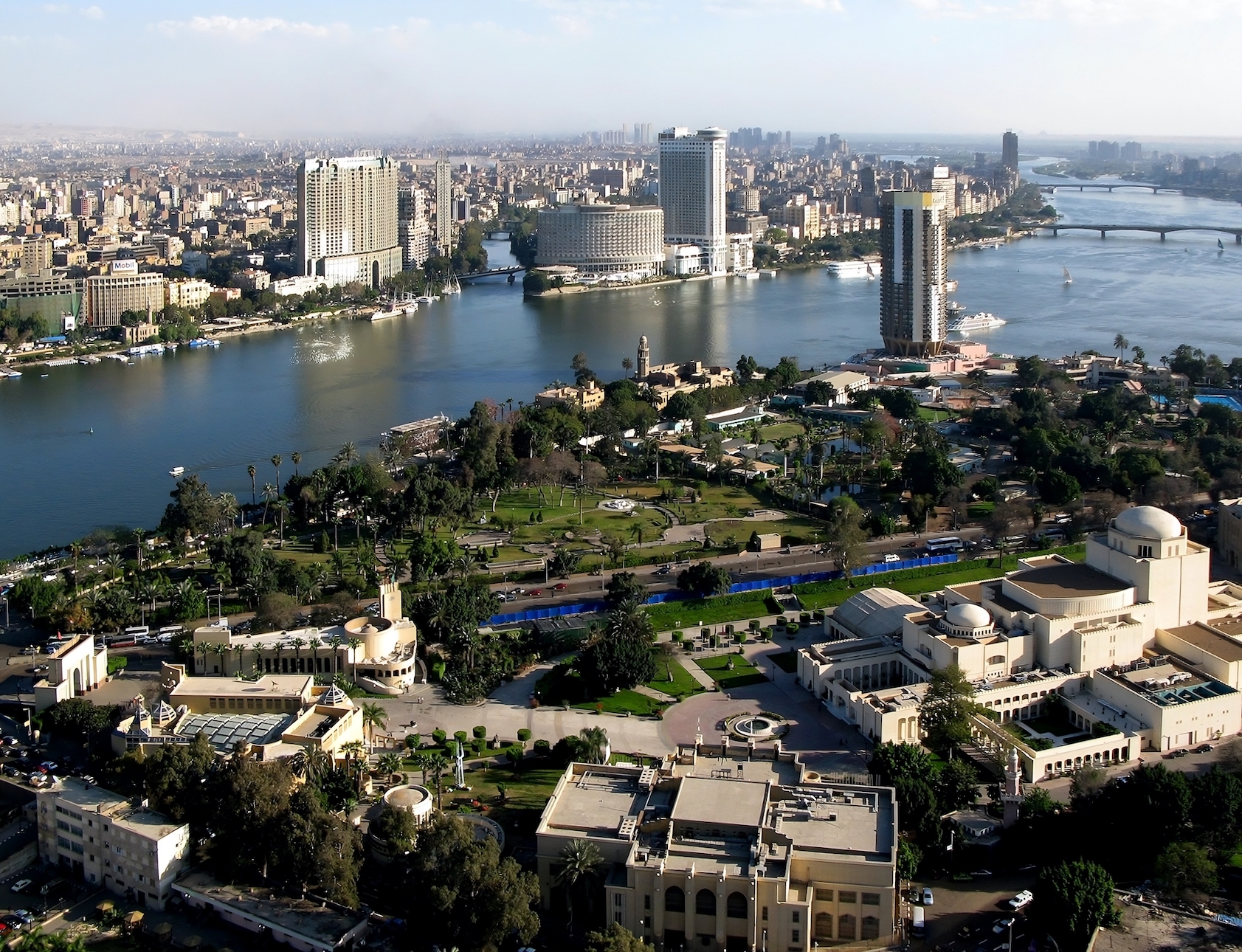
Ancient Egyptian civilization represents one of humanity’s most remarkable cultural achievements, demonstrating the human capacity for monumental construction, artistic sophistication, scientific innovation, and cultural continuity across thousands of years. Egyptian society created institutions, artistic traditions, and intellectual achievements that influenced global development while maintaining distinctive cultural characteristics.
Understanding Egyptian culture requires recognizing both its unique features and its connections to broader African and global historical processes. Egypt was simultaneously distinctively Egyptian, fundamentally African, and globally influential—a complexity that challenges simple categorizations and enriches our appreciation of cultural development.
Perhaps most importantly, Egyptian civilization demonstrates the enduring human capacity for cultural achievement under favorable circumstances. The stability provided by the Nile’s agricultural abundance, combined with Egyptian social organization and cultural values, created conditions that enabled extraordinary human creativity and innovation.
The legacy of ancient Egypt continues shaping contemporary culture while providing insights into the relationships between environment, social organization, and cultural achievement. Egyptian culture offers both inspiration for human potential and practical lessons about building societies that can maintain cultural continuity while adapting to changing circumstances.
Putting It All Together
For Further Reading
- Canadian Museum of History – Egyptian astronomy, math, and science \
- Metropolitan Museum of Art – Egyptian art and artifact collections
- British Museum – Egyptian artifacts and cultural interpretations
- U.S. Library of Congress – Digital archives of Egyptian texts and hieroglyphic resources
- Middle East Institute – Contemporary Egyptian cultural expressions and heritage preservation efforts

